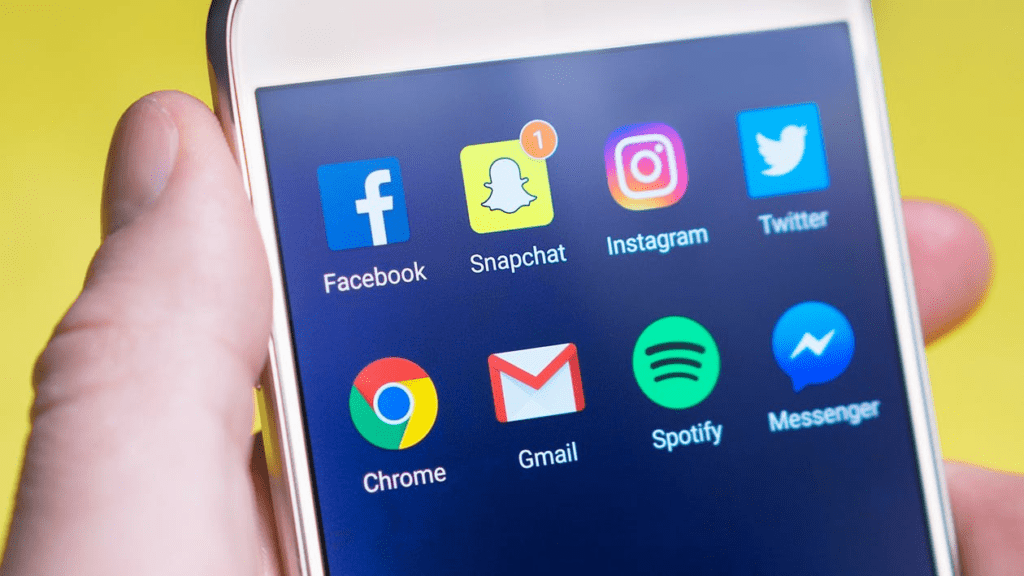If you’re new to digital marketing, it’s okay to feel overwhelmed by the sheer volume of new information and new terms that you’ll encounter on a regular basis. Just like any other profession, digital marketing has developed its own language for describing various marketing channels, marketing tactics or techniques, metrics, and more.
To help you get caught up, we’ve put together this list of 50 digital marketing terms that you need to know in 2020.
[optin-inline id=’cuwcxth6vogybujctxkm’]
50 Digital Marketing Terms You Need to Know
General Digital Marketing Terms
- Search Engine Optimization (SEO) – Search engine optimization is an area of digital marketing that focuses on generating website traffic through search engines. SEO specialists create and optimize websites and content to increase their rankings in the search engine results pages for targeted keywords and gain more high-quality traffic.
- Pay-per-click Advertising (PPC) – PPC advertising is a digital advertising business model where the advertiser is charged for ad placements based on the number of clicks that are generated. PPC includes search advertising, display advertising, and paid social advertising.
- B2B Marketing – A B2B marketing strategy focuses on selling products and services to other businesses – not to individual consumers. B2B marketing is usually characterized by a longer purchasing process, prospects with business motivations rather than personal motivations for making a purchase, and a greater need to effectively identify and nurture high-quality leads.
- B2C Marketing – A B2C marketing strategy focuses on selling products and services directly to the customer. B2C marketing is usually characterized by a shorter sales process that focuses on selling the consumer a solution to their problem and making the conversion process as easy and convenient as possible.
- Web Analytics – Web analytics is a digital marketing discipline that uses software tools to monitor how users interact with a website. Digital marketers can use this information to refine and optimize their websites, improve user experience, and increase conversions.
- Conversion Rate Optimization (CRO) – Conversion rate optimization is the ongoing process of modifying a web page or landing page and its components to increase conversions. CRO specialists use content experiments to identify high-performing variants of a page and implement them to enhance campaign profitability.
- Social Media Marketing – Social media marketing is a digital marketing discipline that focuses on generating brand awareness, engagement, and driving revenue through social media platforms like Facebook, Twitter, LinkedIn, and Instagram.
 Image Source
Image Source
SEO Terms
- Organic Web Traffic – Organic web traffic refers to visitors who arrive at your website from the organic search results pages of Google, Bing, or another search engine. The main goal of most SEO marketing campaigns is to attract more high-quality organic web traffic.
- Search Engine Results Pages (SERPs) – The SERPs are the algorithmically-generated pages that you see when you type a search query into an online search engine like Google or Bing. Content that appears near the top of the SERPs for a given query will get the most exposure and receive more organic web traffic than their competitors.
- Backlink – A backlink is a link from one website to another. The Google Search algorithm uses backlinks to measure the authority and trustworthiness of a given web page. A web page that receives a lot of backlinks from other high-quality websites is perceived as trustworthy and may have a greater chance of ranking well in the search engine results pages.
- Crawler – Web crawlers are Internet robots used by search engines to discover newly published and updated content on the Internet. Crawlers read the contents of every web page to determine its subject matter and relevance. This information is combined with hundreds of other signals and used by search algorithms to determine where (which search queries?) and how (which position?) pages should be ranked in the SERPs.
- Duplicate Content – Duplicate content occurs when the exact same piece of content is published in more than one place online. Search engines like Google prefer to rank original content in their results pages and will penalize websites that repost articles from other sources.
 Image Source
Image Source - Keyword Density – Keyword density is a measurement of how many times a keyword appears on a single page of your website as a percentage of the total word count. For example, a page with 1000 words of content and 20 mentions of the target keyword would have a keyword density of 20 / 1000 = 2%.
- Keyword Stuffing – Keyword stuffing is an old SEO practice where marketers would include their target keyword an excessive amount of times within the content of a page to artificially boost their rankings. Google has updated their algorithm to penalize websites that publish low-quality articles with high keyword densities.
- Keyword Cannibalism – Keyword cannibalism happens when multiple pages of your website target the same keyword or search query on the SERPs – your pages are competing with each other, and you’re basically competing with yourself.
- Negative SEO Attack – A negative SEO attack is when one of your online competitors creates a bunch of spam links pointing to your domain. The idea is to make search engines think you’re guilty of spamming and get your website penalized. You can respond to a negative SEO attack by disavowing spam links.
- Domain Authority – Domain authority is a proprietary SEO metric developed by Moz. The metric combines several signals and predicts how well a given website will rank in the search engine results pages.
- Responsive Design – Responsive design is a web design best practice in 2020, Responsive websites automatically resize page elements to optimize the website layout for the user’s device.
 Image Source
Image Source
PPC Marketing Terms
- Search Advertising – Search advertising uses keyword targeting and a bidding process to position paid advertisements at the top of the search engine results pages where they are readily seen by searchers. Search ads are text-based and contain a short headline with a link and a description.
- Display Advertising – Display advertising uses text, image, or video-based banners and other forms of ad creative to connect with audiences via relevant third-party websites in a display advertising network. Display ads, sometimes called “banner ads”, can appear on websites, mobile sites, or inside mobile apps.
- Paid Social Advertising – Paid social advertising is PPC advertising on a social media platform. Platforms like Facebook, LinkedIn, Quora, and Reddit all offer paid social advertising opportunities for digital marketers.
- Ad Impressions – Ad impressions is a measurement of the number of times an advertisement was displayed on a website or in the SERPs over a specified time period.
- Clicks – Clicks is a PPC metric that measures the number of times an advertisement was clicked by a user. In PPC, advertisers are usually billed by the number of clicks their advertisements generate.
- Click-Through Rate (CTR) – CTR is a PPC metric that quantifies how frequent an ad impression resulted in a click. It can be calculated by taking the total number of clicks and dividing by the total number of ad impressions during a specified time period.
- Landing Page – A landing page is the web page where a user will land after clicking on your search or display advertisement. The purpose of a landing page is to encourage visitors to take the next step in the purchasing process. Landing pages may be used to offer exclusive content to visitors and collect their contact information for follow-up.
- Conversions – In PPC, a conversion is counted each time a user arrives at the landing page and satisfies the objective of the campaign. The objective could be lead generation (signing up for a newsletter with an email opt-in) or sales generation (purchasing a product or service).
- Conversion Rate – The conversion rate for a landing page is equal to the total number of visitors who completed the goal (converted visitors) divided by the total number of visitors to the page.
- Return on Ad Spend (ROAS) – ROAS is a measurement of profitability for an advertising campaign. ROAS can be calculated as a ratio of the total revenue generated by an advertising campaign to the total cost of all clicks.
- Ad Quality Score – On Google Ads, the Quality Score metric estimates the relevance and quality of your ad creative, keyword targeting, and landing pages. Ads with higher quality scores have a higher predicted CTR, lower CPC for targeted keywords, and are more likely to be shown to audiences.
 Image Source
Image Source - Remarketing – Remarketing is a special kind of PPC advertising campaign that targets users who have previously visited your website or interacted with your brand online.
B2B Marketing Terms
- Marketing Qualified Lead (MQL) – In the world of B2B, marketing and sales teams must collaborate closely to identify high-quality prospects and nurture them through the sales/marketing funnel. An MQL is a lead that has been identified by marketing as having an especially high likelihood of becoming a customer.
- Sales Qualified Lead (SQL) – In B2B marketing, an SQL is a high-quality prospective customer that has been nurtured by the marketing team across multiple touchpoints and is likely ready for a conversation with sales. B2B marketers may use a lead scoring system with specified criteria to differentiate between normal leads, MQLs, and SQLs.
- Opportunity – In B2B sales, a lead becomes an opportunity after they have been contacted by the sales team and agreed to further engage with the sales process, such as a product demo or discovery call.
- Cost per Acquisition (CPA) – CPA is a measurement of how much it costs for a B2B marketing organization to acquire a single new customer.
- Customer Lifelong Value (CLV) – CLV is a measurement of the total value of a customer to a business throughout the entire customer life cycle.
- Marketing Attribution – Marketing attribution is the process by which marketers assign credit for marketing results and determine which channels are most successful at driving conversions.
- Closed Loop Marketing – Closed-loop marketing is a marketing attribution method that uses lead tracking and data analytics to follow prospects from their first engagement to the final sale and correctly attribute the source of every new customer to the appropriate channel.
Web Analytics Marketing Terms
- Cookies – Cookies are snippets of code that are used to record user activity on a specific web page. Web analytics software tools like Google Analytics use cookies to measure user engagement, track user behaviors, and help digital marketers optimize user experiences on their websites.
- User Experience – Digital marketers use web analytics software to measure user experience on their websites. Metrics such as pages/session, average time on site, and average scroll depth help marketers determine whether their content is truly resonating with the target audience.
 Image Source
Image Source
- Bounce Rate – Bounce rate is one of the most important user experience metrics. Your bounce rate is a measurement of how frequently visitors to your website leave before engaging with the page. High bounce rates are correlated with poor user experience and can result in low conversion rates and penalties to your organic search rankings.
- Page Speed – Page speed is a measurement of loading time for a specific web page. Long page loading times are associated with high bounce rates, low conversion rates, and poor user experience.
Conversion Rate Optimization (CRO) Marketing Terms
- Content Experiment – A content experiment is when a digital marketer sets up multiple different versions of the same landing page and puts them in front of audiences to determine which one performs or converts the best.
- A/B Testing – A/B testing is a type of content experiment that compares the performance of two different variations of the same landing page.
- Split Testing – Split testing is a type of content experiment that compares the performance of two completely different landing pages.
 Image Source
Image Source - Multivariate Testing – Multivariate testing is a third type of content experiment that compares the performance of many different variations of the same page. These variations are generated by creating multiple variations of several different page elements and combining them together in different ways. The pages will be shown to prospective customers to determine which one converts at the highest rate.
- Above the Fold – Content on a website is “above the fold” if it appears to the user immediately when the page loads, without them having to scroll down. The best digital marketers recognize the importance of placing important page elements above the fold where they are guaranteed to be seen.
Social Media Marketing Terms
- Reach – The reach of a social media post is a measurement of the total number of unique individual users who saw the post.
- Engagement – Engagement is a composite social media metric that includes all forms of interaction generated by your content on social media. The most common forms of engagements across platforms include liking content, commenting on a post, sharing a post publicly or with friends, and following or subscribing for more updates.
- Relevance Score – Facebook’s relevance score metric is similar to the Quality Score metric on Google Ads. It measures the overall relevance and engagement level of your ads, which determines your cost per click and how frequently your ad will be shown to users.
- Native Advertising – Native advertisements are digital ads that don’t use traditional ad formats like display or search advertising. Instead, native ads appear more organically within editorial content, making them less likely to be ignored by audiences. “In Feed” advertisements that appear in your social media news feed are a typical example of native advertising.
Summary
This brings us to the conclusion of our list of 50 digital marketing terms you should know.
The biggest thing we learned while creating this list is that there are far more than 50 digital marketing terms that are worth knowing and understanding – but the ones listed here should be enough to help you start speaking the language of digital marketing.
If you’re interested in learning more about digital marketing, check out our digital marketing course at Directive Institute.
-
 CEO
Garrett Mehrguth
CEO
Garrett Mehrguth
Did you enjoy this article?
Share it with someone!
